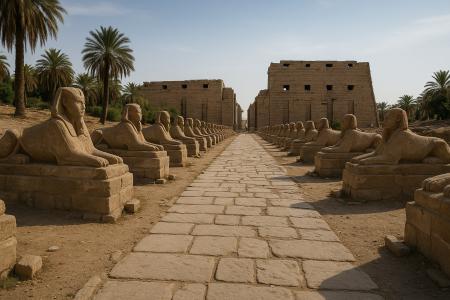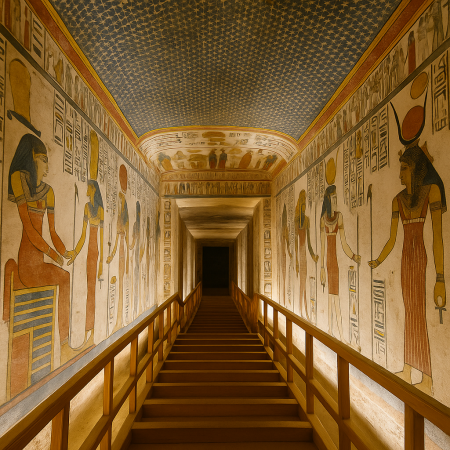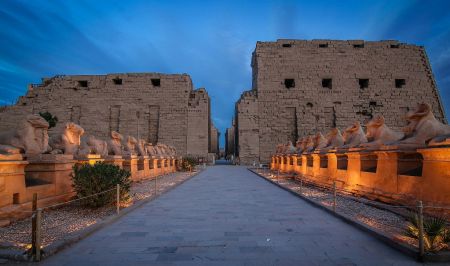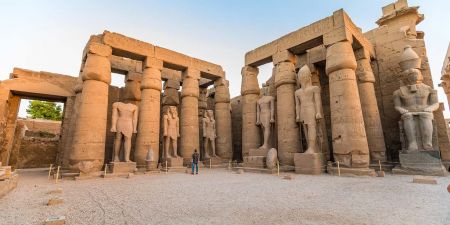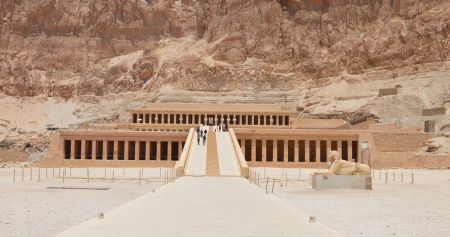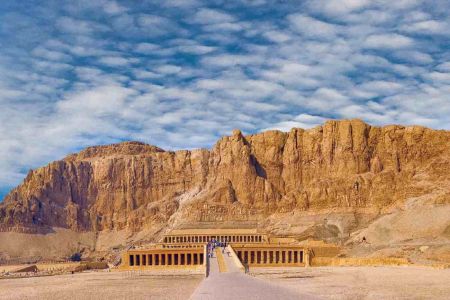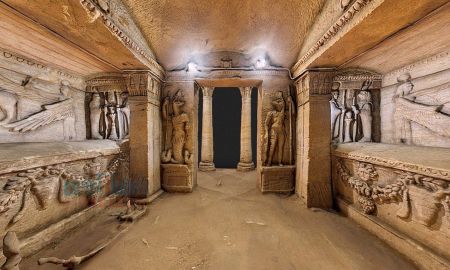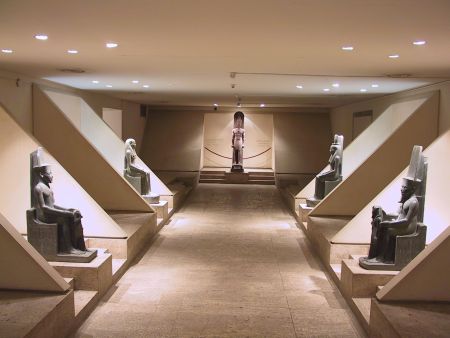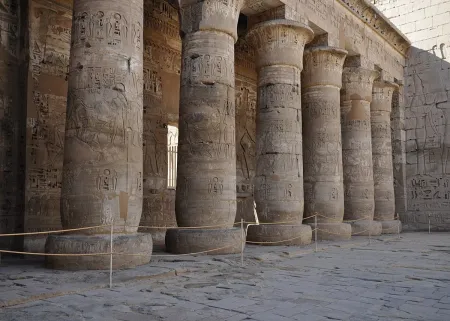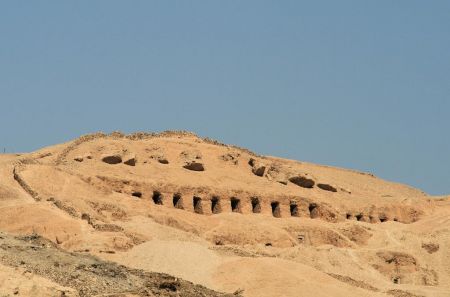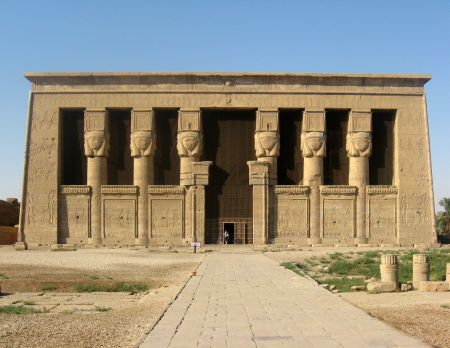Luxor City : Capital of Ancient Egypt
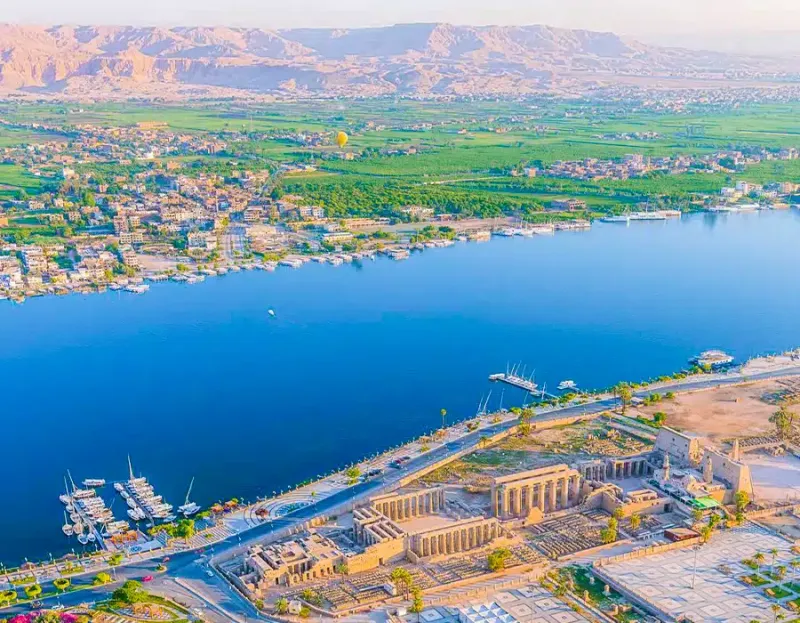
Step into the World’s Greatest Open-Air Museum: Luxor City
Nestled along the banks of the Nile River in southern Egypt, Luxor City is a destination unlike any other—a vast open-air museum where the past lives on in monumental temples, royal tombs, and sacred hieroglyphs etched into the sands of time. Once known as Thebes, Luxor served as the religious and political capital of Ancient Egypt's New Kingdom and continues to captivate historians, adventurers, and culture lovers with its unmatched archaeological wealth.
From the awe-inspiring Karnak Temple to the haunting beauty of the Valley of the Kings, Luxor offers a front-row seat to ancient Egyptian civilization at its peak. But Luxor isn’t just a historical site—it's a living city where modern life unfolds alongside ancient wonders. Horse-drawn carriages trot past colossal statues, bustling markets sell spices in the shadow of obelisks, and the Nile glistens under the same sun that once shined on Pharaohs. Whether you're tracing the steps of Tutankhamun or sailing on a felucca at sunset, Luxor City invites you to witness the eternal glory of Egypt’s golden age.
The Ancient Legacy of Luxor
Luxor as Ancient Thebes
Luxor was once known as Thebes, the capital of Egypt during the New Kingdom (1550–1070 BCE). It was a city of unparalleled wealth, political power, and religious significance. Revered as the home of the god Amun-Ra, Thebes attracted pilgrims, architects, and scribes from across the ancient world. Pharaohs like Hatshepsut, Ramses II, and Tutankhamun built temples, tombs, and monuments to proclaim their divine legacy.
A Center of Religion and Ritual
Thebes wasn’t just a political capital—it was Egypt’s spiritual heart. Its temples weren’t only places of worship, but power centers where rituals ensured cosmic order. Processions between Karnak and Luxor Temples symbolized the bond between gods and kings, and festivals like Opet drew thousands for days of feasting, music, and celebration.
East Bank Attractions: Temples of Majesty
Karnak Temple Complex: Egypt’s Largest Religious Structure
Spanning over 100 hectares, the Karnak Temple Complex is the largest religious structure ever built. Dedicated primarily to Amun-Ra, Karnak showcases hypostyle halls, colossal columns, sacred lakes, and obelisk-lined avenues. Over 30 pharaohs contributed to its expansion, making it a historical and architectural marvel. The Great Hypostyle Hall, with 134 massive columns, is an icon of ancient Egyptian grandeur.
Luxor Temple: The Temple of the Kingship
Linked to Karnak by the Avenue of Sphinxes, Luxor Temple was built by Amenhotep III and later expanded by Tutankhamun, Horemheb, and Ramses II. Unlike Karnak, which was focused on divine worship, Luxor Temple was dedicated to the rejuvenation of kingship. Its towering pylons, massive statues, and illuminated night tours make it one of Luxor’s most atmospheric experiences.
Luxor Museum: A Curated Treasure Trove
Overlooking the Nile, the Luxor Museum offers a refined, beautifully lit collection of artifacts from Luxor’s temples and tombs. Highlights include statues of Thutmose III, items from Tutankhamun’s tomb, and mummies of powerful pharaohs, all arranged with modern elegance and thoughtful curation.
West Bank Wonders: Tombs of the Pharaohs
Valley of the Kings: Eternal Resting Place of Pharaohs
The Valley of the Kings is a necropolis carved into the desert cliffs where over 60 tombs were built for New Kingdom pharaohs. The tombs are richly decorated with vivid wall paintings, spells from the Book of the Dead, and detailed carvings that guided the king into the afterlife.The most famous tomb is that of Tutankhamun, discovered nearly intact by Howard Carter in 1922.
Valley of the Queens: Where Royal Women Reside
Just south of The Valley of the Kings lies the Valley of the Queens, the final resting place for royal wives, princesses, and sons. The highlight is the Tomb of Nefertari, wife of Ramses II, renowned for its vibrant frescoes and well-preserved mythological scenes.
Mortuary Temple of Hatshepsut: A Monument of Power and Beauty
Built into the cliffs of Deir el-Bahari, this Temple of Hatshepsut,Egypt’s most successful female pharaoh. Its terraces, colonnades, and reliefs narrate her divine birth, trade expeditions to Punt, and reign of peace and prosperity. It’s one of the most architecturally unique structures in Egypt.
Colossi of Memnon: Silent Guardians of the West
These two 18-meter statues of Amenhotep III stand as solemn sentinels at the entrance of his once-magnificent mortuary temple. Despite centuries of damage, the Colossi of Memnon continue to impress with their sheer scale and historical aura.
Nile Experiences and Cultural Life in Luxor
Sail the Nile on a Traditional Felucca
Glide along the Nile at sunset on a traditional felucca sailboat, watching temple silhouettes rise against golden skies. It's one of the most serene and magical ways to see Luxor’s landscape.
Hot Air Balloon Rides Over Luxor
Take to the skies at dawn for a hot air balloon ride over Luxor’s West Bank. Float above temples, tombs, farmlands, and mountains, experiencing the city’s grandeur from a bird’s-eye view.
Souks and Bazaars: Shop the Ancient Way
Luxor’s local markets are full of spices, alabaster carvings, papyrus art, jewelry, and traditional fabrics. Souq Al-Sagha near Luxor Temple is the best place to grab authentic Egyptian souvenirs while practicing your bargaining skills.
Sail through the heart of ancient Egypt on a 4 Day Nile Cruise from Aswan to Luxor, visiting temples, tombs, and timeless riverside villages.
Essential Travel Information for Luxor City
Getting to Luxor
- By Air: Luxor International Airport connects to Cairo, Hurghada, and several European cities.
- By Train: Comfortable overnight and day trains run between Cairo, Aswan, and Luxor.
- By Road: Buses and private transfers are available from Red Sea resorts like Hurghada.
Where to Stay in Luxor
Luxor offers accommodations for every budget.
- Luxury: Sofitel Winter Palace, Hilton Luxor Resort & Spa
- Mid-range: Steigenberger Nile Palace, Aracan Eatabe Luxor
- Budget: Nefertiti Hotel, Sunflower Guest House
Best Time to Visit Luxor
Visit between October and April, when temperatures are cooler and more comfortable for temple exploration. Summers can reach over 40°C, making mid-day visits challenging.
Why Visit Luxor City?
It’s the Soul of Ancient Egypt
No city on Earth has the density of ancient monuments that Luxor does. If Egypt is the cradle of civilization, Luxor is its heart.
Every Corner Tells a Story
From the tiniest wall carving to the towering columns of Karnak, every site in Luxor is layered with symbolism, history, and myth.
Perfect for Culture, Adventure, and Relaxation
Whether you're unraveling ancient mysteries, sailing the Nile, or sipping tea with locals, Luxor offers a deeply rewarding travel experience.
Frequently Asked Questions (FAQs) about Luxor City
How many days should I spend in Luxor?
Spend at least 3 to 4 days to explore the East and West Banks, relax by the Nile, and enjoy cultural activities.
Is Luxor safe for tourists?
Yes. Luxor is one of Egypt’s safest cities for tourists, with heavy security around archaeological sites and tourist zones.
Are guides necessary at the temples and tombs?
While not mandatory, professional guides significantly enhance the experience by explaining the meaning behind inscriptions and artwork.
Can I enter the tomb of Tutankhamun?
Yes, for an additional ticket. The tomb is small but houses the boy king’s mummy and original sarcophagus.
What should I wear in Luxor?
Lightweight, modest clothing is best. Covering shoulders and knees is recommended, especially when visiting religious or rural areas.
Final Thoughts on Luxor City
Luxor City isn’t just a place to visit—it’s a journey through time, etched in stone and brought to life by the Nile’s eternal flow. It offers one of the richest historical landscapes on Earth, where every monument tells a tale of gods, kings, and ordinary people reaching for immortality. From spiritual awe to cultural immersion, Luxor is a destination that lives in the mind long after your footprints have left the sand.


